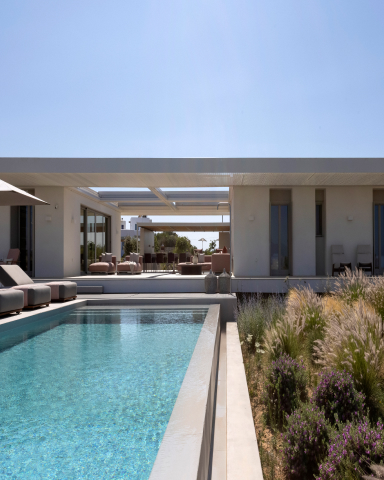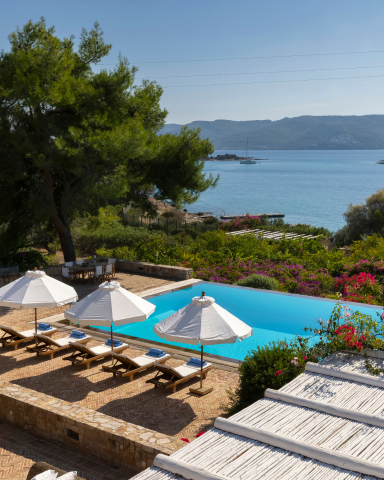Fascinating archaeological sites to see in the Greek Islands

The north-western Greek province of Epirus has a wealth of archaeological and historical sites to explore, all within easy reach of the Ionian Islands and mainland Greece.
Greek Island archaeological sites
Nikopolis
8km north of Preveza (just over the causeway linking Lefkada to the mainland) is the greatly impressive but relatively unknown archaeological site of Nikopolis, a former Roman fortress town founded by Emperor Augustus ostensibly to celebrate his victory in the Battle of Actium but also as a strategic military stronghold and trading hub that controlled everything passing through the area. The city occupied a site of around 375 acres and today there is a variety of fascinating remains to be seen, including an odeum, a theatre and large sections of the original walls.
Cassope
Continuing a few kilometres north from Nikopolis one soon comes to the fascinating site of Cassope. Comprising an agora, a theatre, the prytaneion (seat of the local government) and many other remains, the city of Cassope was built in the 4th century BC and flourished for around 200 years before being largely destroyed by invading Roman forces. When Nikopolis was built, the remaining inhabitants abandoned their town and resettled in the region’s new capital.
Dodoni
In the northwest of Greece, south of Ioannina and situated in the midst of a lovely, peaceful green valley overlooked by the twin peaks of Mount Tomaros, is the Sanctuary of Dodoni. The whole area is scattered with ruins, including an imposing theatre, a sanctuary and an acropolis enclosed by fortified walls. Dodoni is held to be the oldest of the Greek oracles and is unique in its time.

Dodoni's history
The oracle probably functioned from the Bronze Age (2500-1100 BC) to the end of the 4th century AD. The first mentions of the Dodoni occur in Homer’s epics of the 8th century BC and several ancient philosophers and geographers referred to it in subsequent works. One of the myths concerning the site revolves around the ship of Jason and the Argonauts, whose gift of prophecy lay in its unique wooden structure that contained a piece of the holy oak of Dodoni.
The oracle is thought to have begun with the cult of the Great Goddess, Mother Earth - the deity of abundance and fertility who dwelled in the roots of an oak tree. Zeus became an inhabitant of Dodoni and united with the Great Goddess to form a divine couple. The Goddess took the name of Dione which, like Zeus, means deity.
From the 8th to the beginning of the 4th century BC, the oak tree was surrounded by cauldrons, which rested on bronze tripods. As all of the cauldrons were touching each other, whenever one of them was struck by lightning, the sound would reverberate through all the rest. The priests interpreted the will of the god from the sound of the cauldrons, from the rustling of the leaves of the oak tree and from the flight of the doves that nested in its boughs. Petitioners would write questions on small strips of lead, some of which can still be seen today in the Archaeological Museum of Ioannina.
Around the 4th century BC, a small temple of Zeus was built beside the holy oak and a low stone wall took the place of the tripods. The votive sounds were replaced by two columns topped by statues: the first of a boy with a whip in his hand, and the second of a bronze cauldron. When the wind blew, the whip would strike against the cauldron, creating the prophetic sounds.
In the early 3rd century BC, Phyrros, King of Epirus, began an ambitious building programme. Although he did not change the Temple of Zeus itself, he replaced the low stone wall with a stoa comprising three Ionic colonnades which surrounded the court and the holy oak. The historian Polybius gave the temple the name Hiera Oikia or ‘Sacred House’. The Temples of Dione, Themis and Aphrodite were built at the same time and a fortified acropolis was constructed above the sanctuary.
King Phyrrus also started to construct an imposing theatre for the festivals of the Naia in honour of Zeus Naios, hosting athletic games, musical contests and drama competitions. This theatre, seating 17,000 in its heyday and built into the hillside, is one of the largest in antiquity and certainly a sight to behold!
In 219 BC, the Sanctuary was burnt down by the Aetolians. However, they preferred to demolish the Sacred House rather than burn it, probably to avoid destroying the holy oak. The Sacred House could not be kept down for long, however, as in 218 BC, Thermos in Aetolia was attacked and plundered by the Macedonians and the Epirotes, who used their stolen hoard to rebuild the destroyed Sanctuary of Dodoni.
At the end of the 4th c. AD, the cult of Zeus was succeeded by Christianity. In 393 the holy oak was dug out of the ground by the Roman Emperor Theodosius in order to eradicate the pagan traditions. A three-aisled basilica was constructed on the site in the 5th or the 6th c. AD with reused ancient materials.

We're Villa Matchmakers
Because our local experts have personally visited each of our destinations, we know exactly what makes them special. Tell us what your ultimate villa holiday looks like, and allow us take care of the rest.


